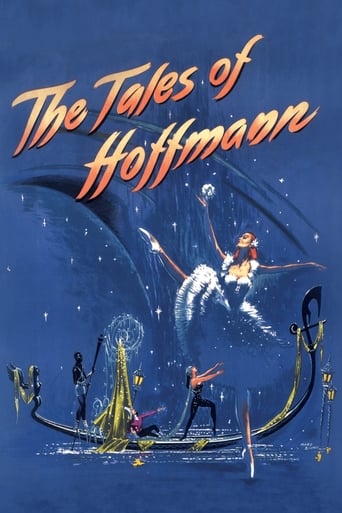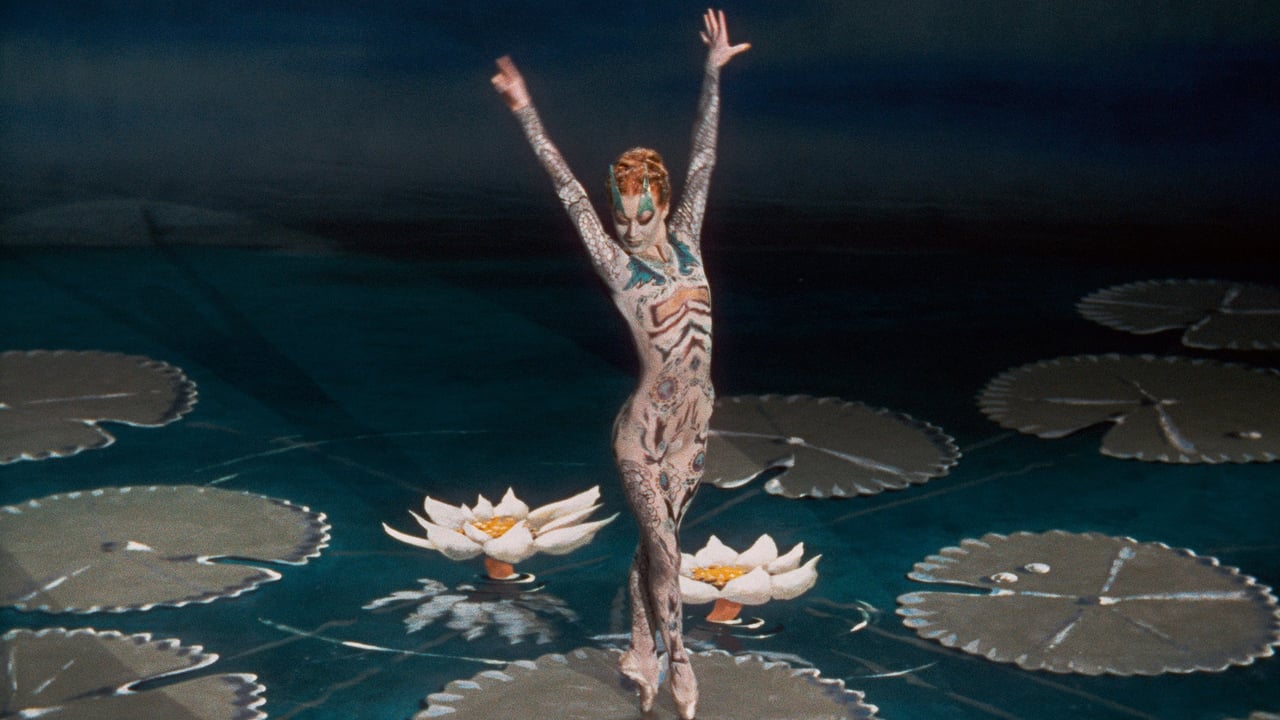mr_hunchback
Commendable for its avant garde techniques, this film was no doubt appreciated by Kenneth Anger, Fellini and Mario Bava. The first two acts are pretty solid - Olympia is whimsical surrealism and Giulietta is sensual surrealism. The Antonia segment torpedoes the entire project and I strongly suggest viewers quit at the end of act two, while they're ahead. Powell either ran out of money, ran out of inspiration, or both. Hoffmann's character is essentially written out of the third act and Powell focuses at length on Anne Ayars - a dumpy old thing with no screen presence. For a director who always discovered great looking talent, from Deborah Kerr to Helen Mirren, it seems suspicious that he would want Ayars in one of his most colorful films. One can pretty accurately surmise that she was sleeping with one of the money bags involved in the production. It makes for pretty miserable finale.For Chitty-Chitty-Bang-Bang fans, this film contains a big animated role for Robert Helpmann who played the Child Catcher.
Panamint
No doubt- this is an opera. A filmed opera (Offenbach's "The Tales of Hoffmann") with cameras pointed at a stage. If you don't care for opera it might be somewhat of a letdown, however there is a tremendous talent level involved here so the film deserves a high rating on a scale of 1 to 10.Moira Shearer dances better than ever. She neither speaks nor sings- this can be disappointing for fans of her acting movies where she is so talented and endearing. I could better cope with her role here if it was strictly as dancer, but she portrays a mechanical doll- not even human, despite the fact that her warm human qualities are so well-known from other movies. This is a dichotomy that I cannot overcome. However, her fabulous dancing and beauty remain and are unchallengeable and very watchable.The opera singer who portrays Hoffmann is just that- an opera singer. He is not an actor, nor is he really asked to either act or dance. Mr. Rounseville sings opera well but his every sound and movement is from the operatic stage. He is an opera guy.There are some very romantic scenes between Hoffmann and dancer Tcherina, and they are romantically filmed. I really liked their romance before a mirror- very well done. But again, these scenes are posed and operatic- Ms. Tcherina is not doing ballet at the time.The supporting dancers are all terrific and there are some great dance sequences but they are mostly danced to operatic music, and the overall theme is opera singing with dubbed voices for most of the participants.The music is lively. Most of it is beautiful, but some is pretty bad (the beer-garden intermission scene). This is an old opera and if you don't like opera you might be somewhat disappointed watching it despite the tremendous display of talent and fantastic sets. One set has some interesting stand-alone decorations and one item there appears to be a Juan Miro painting, possibly suspended on a wire.
Neil Doyle
Certainly THE TALES OF HOFFMANN is not a film for everyone. It's done as pure opera with singing throughout and performed as a ballet with lavish set designs and breathtaking use of Technicolor. It won Oscar nominations for Set Decoration and Color and is produced in the tasteful style of all Powell and Pressburger films.But the drawback is that only the tale of Olympia, the mechanical doll, and the ill-fated love affair with the young Hoffmann (played in all three segments by tenor Robert Rounseville) is up to the top standards the film strives to achieve. The other tales of Hoffmann's follies are less interesting, not as easy to understand and not as entertaining or melodious as the Olympia segment.The final tale of Antonia suffers from the high notes forced upon screeching soprano (Anne Ayars) and the demands of the score which is clearly more tedious than melodious at this point.Robert Helpmann as the villain in all three tales is excellent and Robert Rounseville as Hoffmann is the only cast member who does his own singing in a strong tenor voice. You may remember him as Mr. Snow in Rodgers and Hammerstein's "Carousel" with Gordon MacRae and Shirley Jones.But there's no denying the magic of all the visual images on screen which includes the use of puppets and a good mixture of cinema and stage techniques. Opera lovers will find fault with some of the singers but it's hard to see any fault in the dancing which looked magnificent to me.None of the stories are as involving as "The Red Shoes" and this is one of the weaknesses of the film. The first story is far better than the rest of the tales which makes for an uneven blend of storytelling.A brilliant use of color and classical music makes it a "must see" for most film buffs.
tedg
This is not your usual movie experience. It matters, so prepare your day accordingly.Its not as miraculous as "Red Shoes." But it is bigger. It is folded like Shoes, but less delicately. In the case of the previous project, the story was about a performer, who glided in and out of the movie and the movie within, the two overlapping magically.Here we have the same dancer, the marvelous, redheaded Moira Shearer. And her dance merges with the movie, but the movie is a heavier construction:It is a movie of an opera of a ballet performance wherein we embed three stories. The stories themselves fold into each other, each a story of Hoffman in love with a woman manipulated by an evil man-spirit. He's the same man in each case, of course. In each of the four cases (the three stories and the outside of the ballet), he prevents the lovers from uniting.These guys Powell and Pressburger, don't know much about the immediacy of storytelling. They don't know long form pacing. They don't know deep emotional engagement. But they sure know how to stage some of the most marvelous effects and build to them. They know something about photographing dance and what balance means to a camera. And they are perhaps the masters at cinematic folding: the ways of visually ambiguating the play and the audience.I may put this on my list of films you must see before you die. We'll see how I feel about it in a month, if I still am affected in my dreams.One thing that enhances this: Hoffmann is in love with Moira's Ballet character, someone he says embodies all three of his previous, lost loves, the first of which is also Moira. She's redhead. The director's love is also a redhead, one Pamela Brown who plays Hoffmann's (male) attendant. He remained devoted to her for the 25 years until her death. His attentiveness to her, hers to Hoffmann, and Hoffmann's to Moira's character is a sort of circle. Its ironic then that Moira's participation in Powell's two ballet movies ruined her career.I saw this together with "Nightdreams," a porn film from the early eighties. It was episodic like this, worked with women stereotypes like this in a context of extreme fantasy and demons, and helplessness. Same sort of notion: story, tension, attraction, obsession. A different class in terms of skill of course and cinematic breadth, and the story here is more genteel in term of genitals. But a disquieting similarity.Ted's Evaluation -- 3 of 3: Worth watching.


 AD
AD




